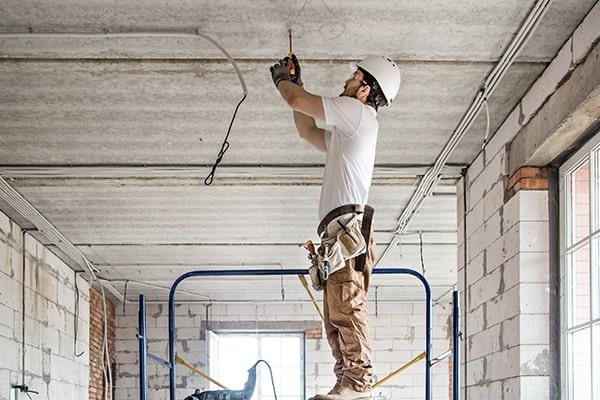Case study
| Region/Nation | Yorkshire and Humber |
|---|---|
| Programme | Coronavirus Business Interruption Loan Scheme (CBILS) |
| Partner |
As they did with many businesses, the government shutdowns in 2020 left this electrical and mechanical contractor with no sites on which to work and nowhere to deploy its 40-plus staff. With turnover quickly dwindling and showing no signs of being able to support the business through a long period of suspended trading, the company applied for a loan via the Coronavirus Business Interruption Loan Scheme (CBILS).
Read what it had to say in this CBILS case study.
British Business Bank: Can you tell us what your organisation does?
Paul Baldwin, managing director of Pitts Wilson: Pitts Wilson is an electrical and mechanical contracting business based in Bradford. The business is split into two main categories: servicing, repair and small works, and contracts. We provide services to commercial and Industrial clients nationwide.

How did COVID-19 affect your business, and why did this mean you needed a loan from the Coronavirus Business Interruption Loan Scheme (CBILS)?
Very shortly after the Government’s announcement that people should stay at home and only go out if it was essential, we found that all the larger sites we were working on around the country shut, meaning we had nowhere to send more than 40 site operatives. We also saw a reduced workload on the servicing and repair type work, which again affected the number of staff who could continue to work productively.
Turnover at the end of March, through April and into May 2020 dropped to a small percentage of what we expected. While we made efforts to control our overheads, and took advantage of such initiatives as the Job Retention Scheme, deferrals to VAT, PAYE and corporation tax, and arranged a mortgage holiday, it was apparent that turnover would fall to a level that wasn’t going to cover our overheads over an unknown length of time.
Our cashflow was under serious pressure and so, following some detailed analysis, we applied for a loan under the Coronavirus Business Interruption Loan Scheme.
How long did the application process take? Did you need any support?
We made first enquiries with our bank on 1 April 2020 and provided an initial cashflow forecast. The bank asked for further detailed information and we returned that within a week or so. We signed the loan agreement on 21 April and the funds arrived in our account on 4 May. So overall it took around five weeks.
We acted early and got funds in place pretty quickly. [That meant] we could manage payments and support our staff and supply chain without the stress of worrying about the pressure on the bank balance. We’re now in a strong position to bounce back from the effects of the pandemic and well-placed to drive the business forward in years to come. - Paul Baldwin managing director of Pitts Wilson
What advice would you give to other businesses applying for a CBILS loan?
Take time to consider all your options and look at your business overall – its staff, client base etc. Take steps to control your overheads, undertake detailed forecasts in terms where the business will be if the situation continues for a month, two months or longer, and judge the impact on the business from a profitability and cash perspective while making considered and solid assumptions.
If you find you need cash, take advantage of CBILS. It’s interest-free for a year, the loan terms can be as long as six years, and, with some lenders, can be paid back without penalty at any time. The detailed forecasts you’ve already put together will provide the basis of your application to the bank so the application process should be straightforward. At the end of the day, it could be the difference between your business surviving through this period or not.
How has the CBILS loan helped your organisation to weather the outbreak? And what might have happened if you hadn’t received it?
We acted early and got funds in place pretty quickly. It wasn’t until around June that we came to the period where we needed the money to support the business. At that point, we could manage payments and support our staff and supply chain without the stress of worrying about the pressure on the bank balance. We’re now in a strong position to bounce back from the effects of the pandemic and well-placed to drive the business forward in years to come.
Without the loan, the business would have struggled from a cash point of view and forced to look at alternative methods of raising the capital needed to run the business. The alternatives would have required support from the bank and/or investors and shareholders. And if we didn’t get that support, the future would’ve looked bleak.


